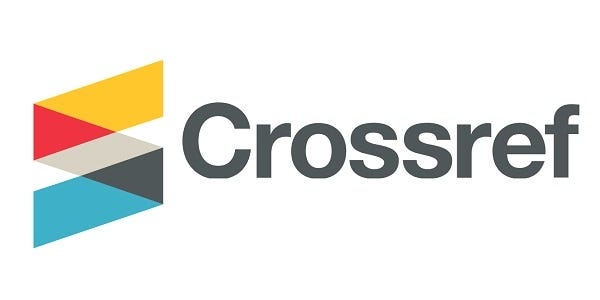RANCANG BANGUN SISTEM SOLAR CHARGING STATION BERBASIS ARDUINO MEGA2560 DILENGKAPI PEMBATASAN DAYA BEBAN
 Abstract views: 29
,
Abstract views: 29
,
 pdf downloads: 22
pdf downloads: 22
Abstract
The widespread use of smartphones in public places has driven the adoption of power banks as a solution for power needs. However, power banks have several drawbacks. To address these needs in public places, charger station systems have been widely implemented, including solar panel-based charger stations as their power source. These developments have also extended to commercial applications, allowing the use of charger station facilities in public places to be subject to specific charges. In this study, a solar charger station system with coin-operated payment for electricity was developed. Additionally, for system security, a feature was added to limit the current flow to the load to a specific amount. The charger station was built using several components, including solar panels, solar charge controllers, and batteries, which are integrated to produce electricity. An inverter is used to convert DC current into AC current, which is then connected to electrical terminals via a solid-state relay switch. Arduino Uno is used to control the electrical connection from the inverter to the terminal through the solid-state relay based on data from the coin acceptor and the PZEM-004T sensor. An LCD is also used to display information required by the users. The test results showed that the solar charger station system could successfully charge smartphones using 1,000-rupiah coins with a 100% success rate. With a rate of 1,000 rupiahs per 40Wh, the charger station system can disconnect the power supply to each load after consuming 40Wh of electricity. Additionally, the system is capable of disconnecting the load when the attached load exceeds 40W.
References
[2] A. Poer, “Kelebihan dan Kekurangan Power Bank,” 2023. https://datascripmall.id/blog/kelebihan-dan-kekurangan-power-bank/?srsltid=AfmBOoo1w1_ID-_Kd4wwi9s_9G7 zippGLWwDw4ogGPUrT4eNeDqEoBik (diakses 1 November 2024).
[3] A. Yulimaulidia dan Y. P. Raharjo, “Pengaplikasian Tenaga Surya Pada Perancangan Charger Station Di Kawasan Bandung the Aplication of Solar Cell in Design of Charger Station in,” vol. 5, no. 3, hal. 3734–3742, 2018.
[4] S. Shidqi, S. Sasmono, dan ..., “Desain Sistem Charging Station Untuk Smartphone Sebagai Fasilitas Publik Menggunakan Panel Surya Off-grid,” eProceedings …, vol. 8, no. 5, hal. 4276–4282, 2021, [Daring]. Tersedia pada: https://openlibrarypublications.telkomuniversity.ac.id/index.php/engineering/article/view/15583%0Ahttps://openlibrarypublications.telkomuniversity.ac.id/index.php/engineering/article/view/15583/15297
[5] A. Jaenul, S. Wilyanti, achmad leo Rifai, dan F. Anjara, “Rancang Bangun Pemanfaatan Solar Cell 100 Wp Untuk Charger Handphone Di Taman Bambu Jakarta Timur,” Proc. …, hal. 194–198, 2021, [Daring]. Tersedia pada: https://www.journal.ubb.ac.id/index.php/snppm/article/ view/2749%0Ahttps://www.journal.ubb.ac.id/index.php/snppm/article/download/2749/1610
[6] F. I. Pasaribu dan M. Reza, “Design and Build an Arduino-Based Charging Station Using 50 WP Solar Cells,” R E L E (Rekayasa Elektr. dan Energi) J. Tek. Elektro, vol. 3, no. 2, hal. 46–55, 2021.
[7] Rian Tedy Lestari, Djadjat Sudaradjat, dan Trisna Fajar Prasetyo, “Perancangan Charger Station Dengan Pembayaran Uang Koin Beserta Analisa Potensi Bisnisnya,” J. Elektron. dan Tek. Inform. Ter. JENTIK ), vol. 1, no. 4, hal. 48–65, 2023, doi: 10.59061/jentik. v1i4.468.
[8] W. Latifah, M. Nuzuluddin, I. Komala, dan D. Patwari, “Rancang Bangun Kontrol Charger Station Dengan Panel Surya Berbasis Mikrokontroler,” Juni, vol. 2, no. 1, 2024, [Daring]. Tersedia pada: https://e-journal.hamzanwadi. ac.id/index.php/printer/article/view/23750/5537
[9] M. A. N. Buana, M. I. Ashari, dan K. A. Widodo, “Stasiun Pengisian Daya Listrik menggunakan Sensor Koin untuk Akses Stop Kontak,” Pros. SENIATI, vol. 6, no. 1, hal. 85–92, 2022, doi: 10.36040/seniati.v6i1.4883.
[10] Zaenurrahman, A. Sumardiono, E. Alimudin, H. Susanti, dan F. Hazrina, “Sistem Kontrol dan Pemantauan Budidaya Bayam Secara Hidroponik di Desa Widara payung Wetan, Kecamatan Binangun, Kabupaten Cilacap,” Indones. J. Civ. Soc., vol. 5, no. 2, hal. 53–60, 2023, doi: 10.35970/madani.v1i1.1667.
Copyright (c) 2024 E-JOINT (Electronica and Electrical Journal Of Innovation Technology)

This work is licensed under a Creative Commons Attribution 4.0 International License.
Authors who publish with this journal agree to the following terms:
- Authors retain copyright and grant the journal right of first publication with the work simultaneously licensed under a Creative Commons Attribution License that allows others to share the work with an acknowledgement of the work's authorship and initial publication in this journal.
- Authors are able to enter into separate, additional contractual arrangements for the non-exclusive distribution of the journal's published version of the work (e.g., post it to an institutional repository or publish it in a book), with an acknowledgement of its initial publication in this journal.
- Authors are permitted and encouraged to post their work online (e.g., in institutional repositories or on their website) prior to and during the submission process, as it can lead to productive exchanges, as well as earlier and greater citation of published work (See The Effect of Open Access).







